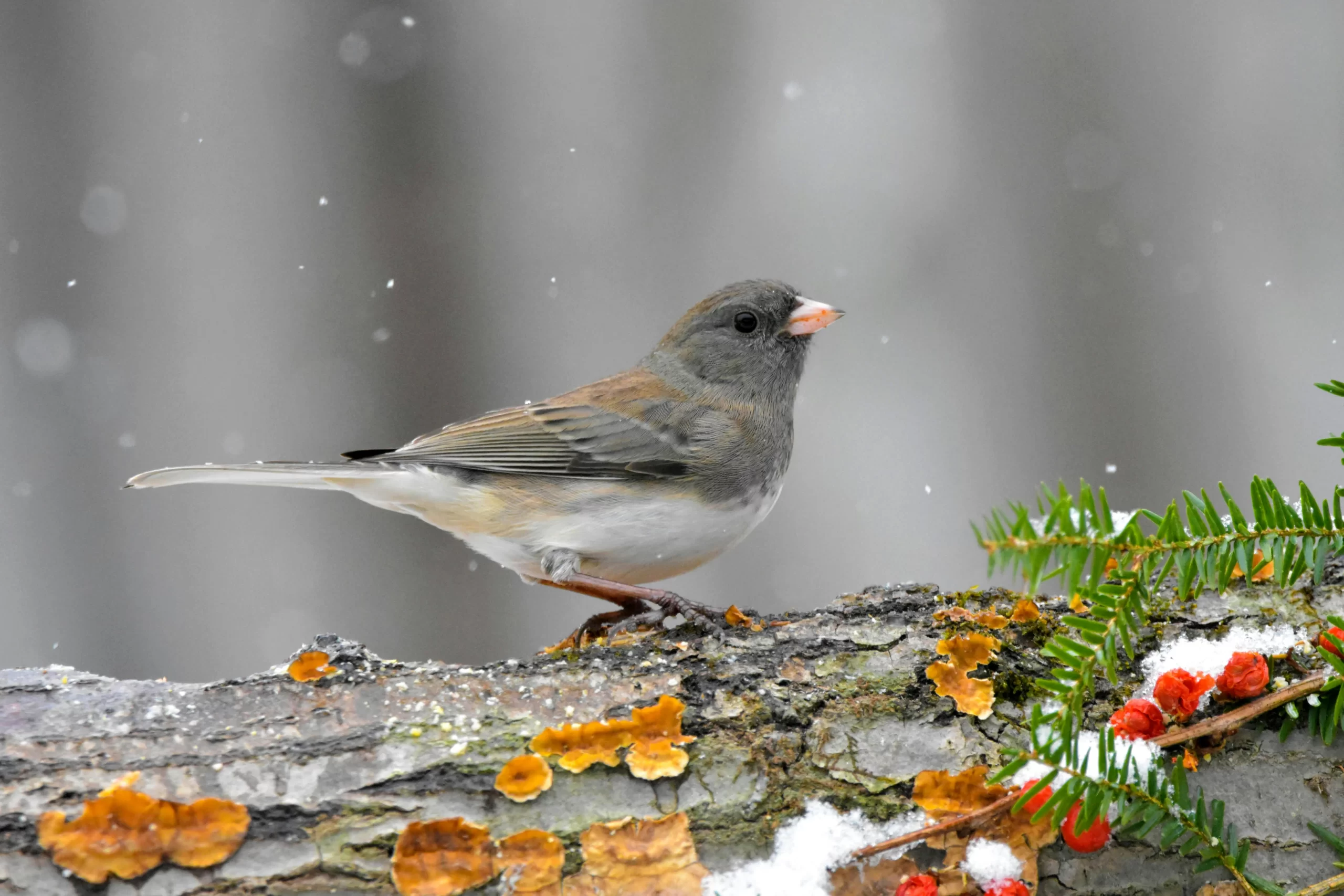Many dread the winter months in Michigan, as December through February usually brings cold weather and lots of snow. Although this can be a trying time of year, winter brings several bird species that cannot be found in the state during any other time of year. Reading about these winter birds in Michigan may shift your perspective and give you a new appreciation of this season.
Now, I will not be talking about just any Michigan winter birds. No, I will instead be focusing on the Michigan winter specialties. Therefore, expect to read about birds that cannot be found in the state during the other seasons of the year. Without further ado, let’s explore 10 winter birds in Michigan!
Table of Contents
10 Winter Birds In Michigan
American Tree Sparrow
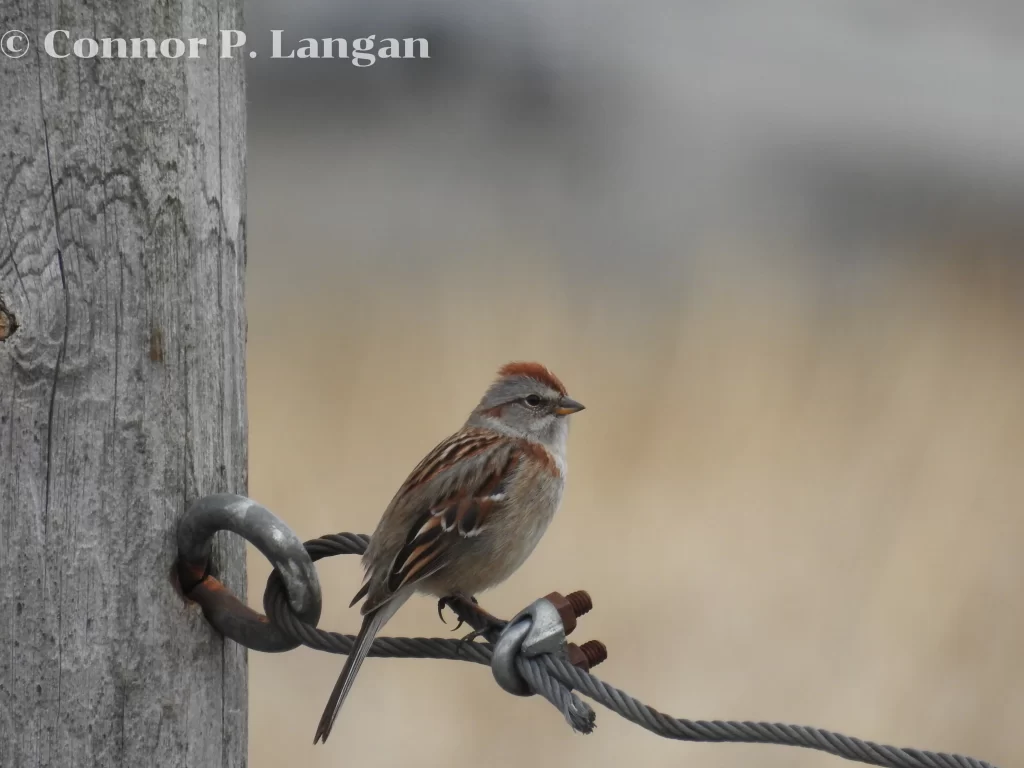
American Tree Sparrows are an unassuming native sparrow. Although they may not look like much with their pale, unmarked undersides, red caps, and brown backs, they are birds with many impressive hidden abilities.
Indeed, American Tree Sparrows take part in lengthy migrations twice annually. These migratory journeys often span more than 1,000 miles, which is no small feat for such a tiny bird. Although they are not breeding birds in Michigan, these sparrows in Ontario breed along Hudson Bay – the nearest breeding population to Michigan.
The entire population of American Tree Sparrows vacates the tundra habitat in which they breed to travel into the United States during winter. Here, they arrive in October and remain until mid-April. Most American Tree Sparrows have left Michigan by April’s conclusion, but stragglers occasionally remain until May.
American Tree Sparrows are poorly named. Like other native sparrows, these birds do not like spending time in trees. Instead, look for these winter birds of Michigan in scrubby areas with lots of grass. Areas such as prairies, overgrown ditches, and wetland edges are good places to look for American Tree Sparrows in Michigan.
Bohemian Waxwing
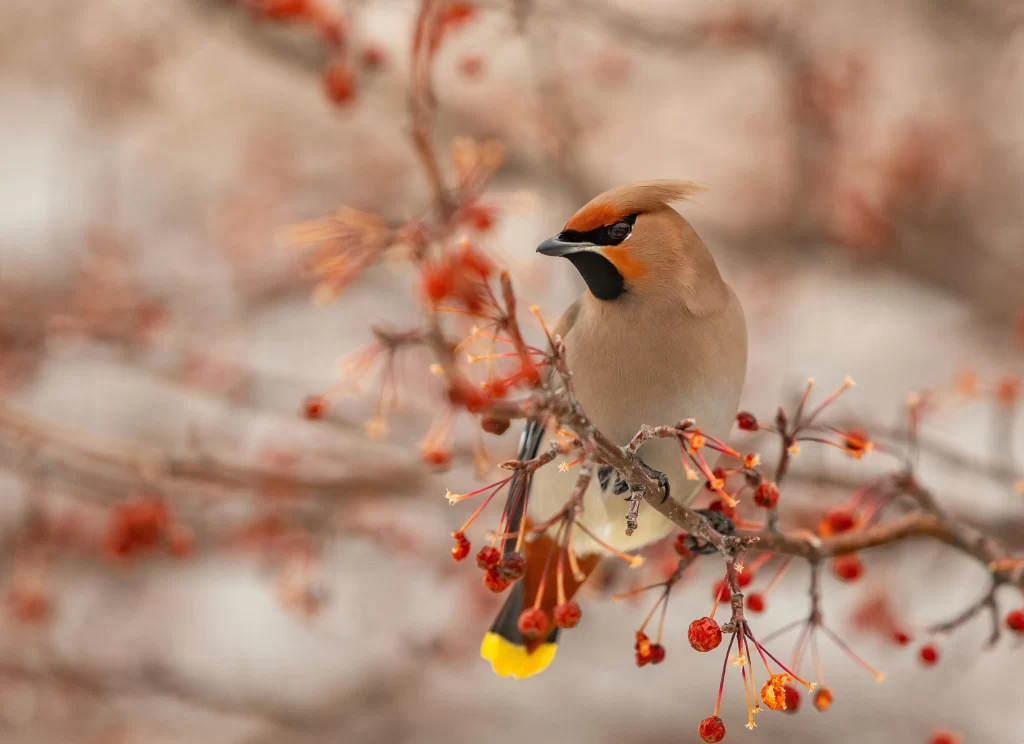
Although Cedar Waxwings are present throughout the year in Michigan, Bohemian Waxwings are winter specialties in the state. They have crests just as Cedar Waxwings do, but birders are not likely to mistake the two species since Bohemian Waxwings are substantially larger. Also, note that these songbirds are gray overall with red under their tails.
Bohemian Waxwings begin to trickle into Michigan as early as September on occasion. However, it is more common for them to arrive in November. These winter birds in MI will then remain in the state for the rest of the winter, with most departing by early March.
Bohemian Waxwings breed in the boreal forests of Canada. They are a nomadic species, meaning they are numerous in some winters and largely absent in others. Birders are progressively more likely to view a Bohemian Waxwings in Michigan as they travel further north. These birds tend to be rare in southern Michigan, but they are seen here occasionally.
The key to finding Bohemian Waxwings during the winter is looking for a steady supply of fruit-bearing trees. Crabapples, serviceberries, apples, mountain ash, cherries, and other berries are regularly eaten by these creatures. Bohemian Waxwings are very social, so you’ll almost always find them in the company of other waxwings.
Common Redpoll
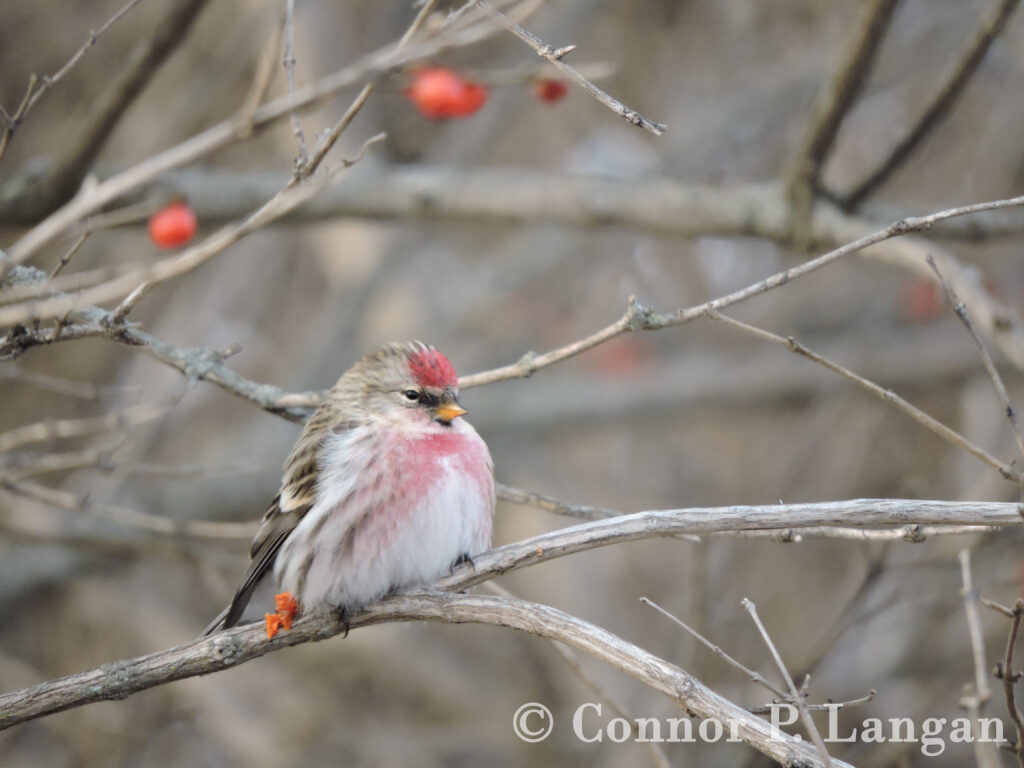
These finches in Michigan are one of two redpoll species that visit the state, with the other being the Hoary Redpoll. However, since the two species are likely to one day be lumped into one, I’ll just be discussing the much more abundant Common Redpoll.
Common Redpolls in Michigan can be widely distributed in some years and rare in others. Like many winter finches, they are quite nomadic, and the number of birds that end up in Michigan is a direct reflection of the food resources that are available further north. Years of scarce food in southern Canada will lead to more Common Redpoll visiting Michigan.
Here, they are regulars at backyard bird feeders, making them familiar to many. They are naturally gregarious, so they’ll typically be found with other redpolls. Common Redpolls usually arrive in Michigan in late October, and many will remain through March. These tiny finches may even stick around into May in some years, but they will not breed in the state.
Indeed, the nearest breeding populations of Common Redpolls can be found in northern Ontario along Hudson Bay.
Dark-eyed Junco
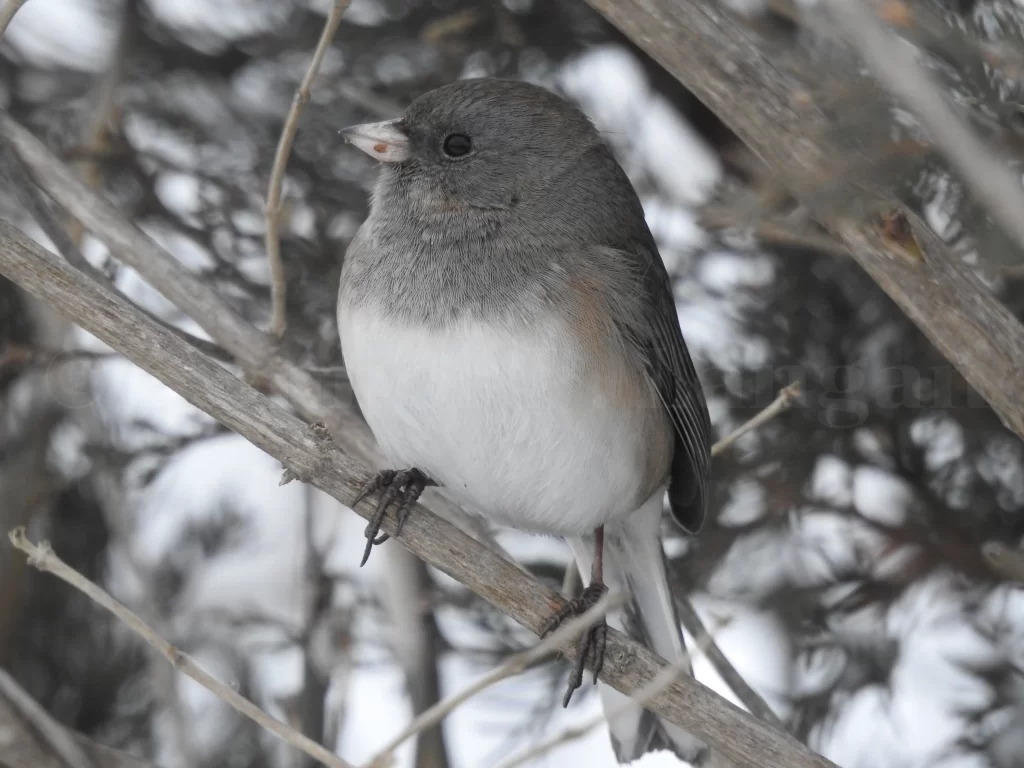
Dark-eyed Juncos are likely the most familiar winter bird to Michiganders, as these gray and white sparrows are abundant in the state during winter. Now, Dark-eyed Juncos are not truly a winter specialty in Michigan, as these birds breed in the northern half of the state. However, I’ve included them on this list because they’re such an iconic winter species.
Dark-eyed Juncos breed in Michigan’s boreal forests. Here, they construct their nests on the ground and keep a low profile. Come October, a massive influx of Dark-eyed Juncos invade Michigan and stay for the remainder of the winter. Early April is when a mass exodus of Dark-eyed Juncos begin to depart the state. Most of the non-residents are gone by May.
Those who offer bird seed in their backyards are likely familiar with Dark-eyed Juncos, as these songbirds readily feed underneath bird feeders. Here, they’ll often congregate in groups as they hop along the ground. Dark-eyed Juncos are frequently found in both urban and rural areas, making them the most common of the winter birds in Michigan.
Lapland Longspur
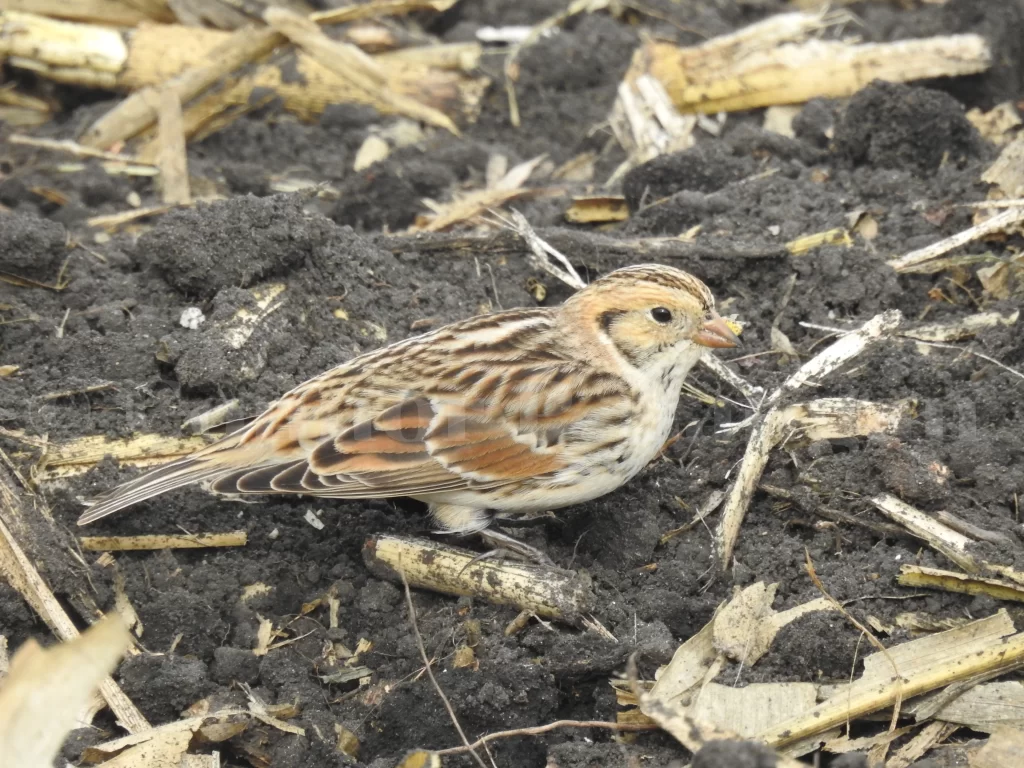
Lapland Longspurs are subtle Michigan winter birds that are not well-known by most Michiganders. Nevertheless, many thousands winter in the state. Lapland Longspurs are fairly nondescript with their streaked brown plumage and white undersides.
Lapland Longspurs gather into sizable groups during winter. Some groups may number a few dozen, while others may contain upward of 1,000 birds. Gathering into such massive groups helps Lapland Longspurs evade predators and locate food.
One of the reasons that Lapland Longspurs are unfamiliar to many Michigan residents is that they’re primarily found in rural settings. Harvested corn or soybean fields are great places to look for these creatures, as they love to feed on the waste grain. In addition to these settings, they may also be found on beaches or in short, grassy habitats. During snowstorms, these winter birds in Michigan gather along roadways to eat grit and seeds.
Lapland Longspurs arrive in Michigan in late September. Many move through the state and winter in other locations, but the ones that winter in Michigan leave the state by the end of April. Lapland Longspurs breed on the tundra in northern Canada.
Northern Shrike
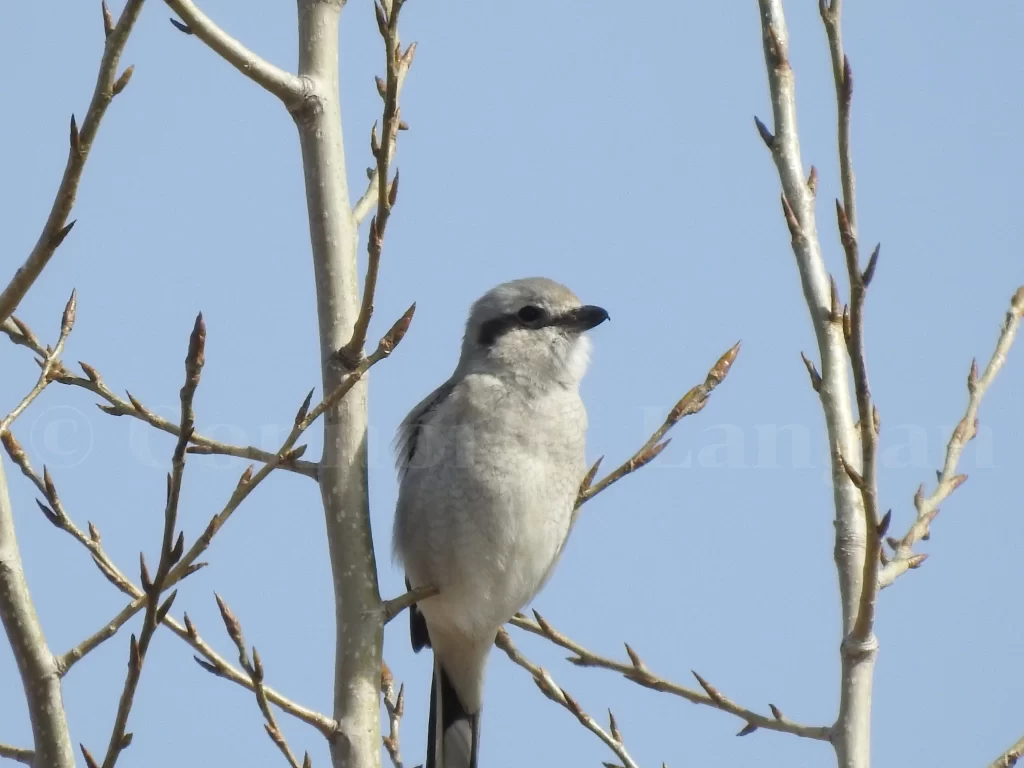
Northern Shrikes are gray songbirds that are roughly the same size as a robin. Although they are not the largest birds, they are quite tenacious, feeding on a variety of small creatures and ripping them apart with their hooked bills.
Being an unassuming gray bird, one would think that Northern Shrikes would be difficult to locate. Indeed, they certainly would be difficult to find if not for their tendency to perch at the top of exposed locations. For instance, the tops of trees are the favorite hunting locations for these birds. From here, they scan for rodents and small birds to eat.
Northern Shrikes breed in semi-open habitats in the boreal forests of Canada. They arrive in Michigan in mid-October, and most leave by the end of March. They avoid forested and urban areas of Michigan, instead seeking open areas with trees scattered throughout the landscape.
Pine Grosbeak
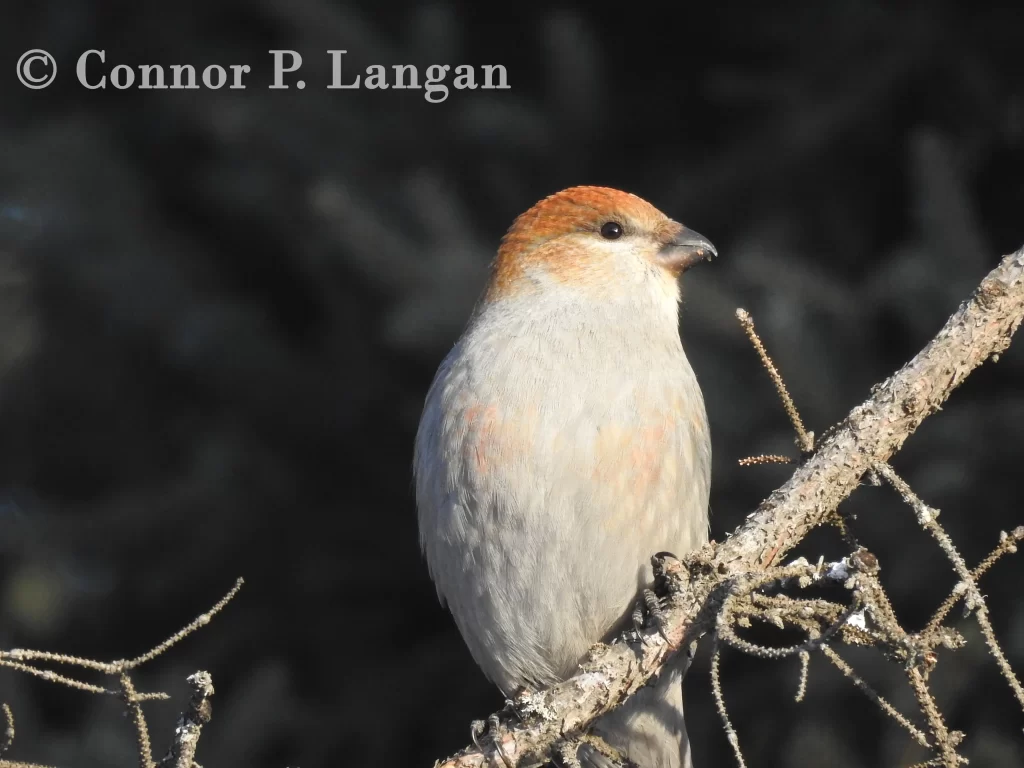
Pine Grosbeaks are sizable, chunky winter birds in Michigan. Males are eye-catching with their rosy red coloration, while females are more subtle with their grayish coloration. Although they may not look like it, Pine Grosbeaks are members of the finch family.
Pine Grosbeaks are social birds, so birders will rarely find a single Pine Grosbeak during winter. They frequent many of the same habitats as Bohemian Waxwings because berries are one of their primary food sources during the winter. Any trees or shrubs that retain sizable, sugary berries into the winter will attract Pine Grosbeaks.
Pine Grosbeaks are late arrivals in Michigan, with many not showing up until November. These Michigan winter birds will remain through much of March in some cases, but most leave by the end of February. Pine Grosbeaks are regularly found in urban areas such as city parks, college campuses, and other areas with dense concentrations of berry-producing plants.
Rough-legged Hawk
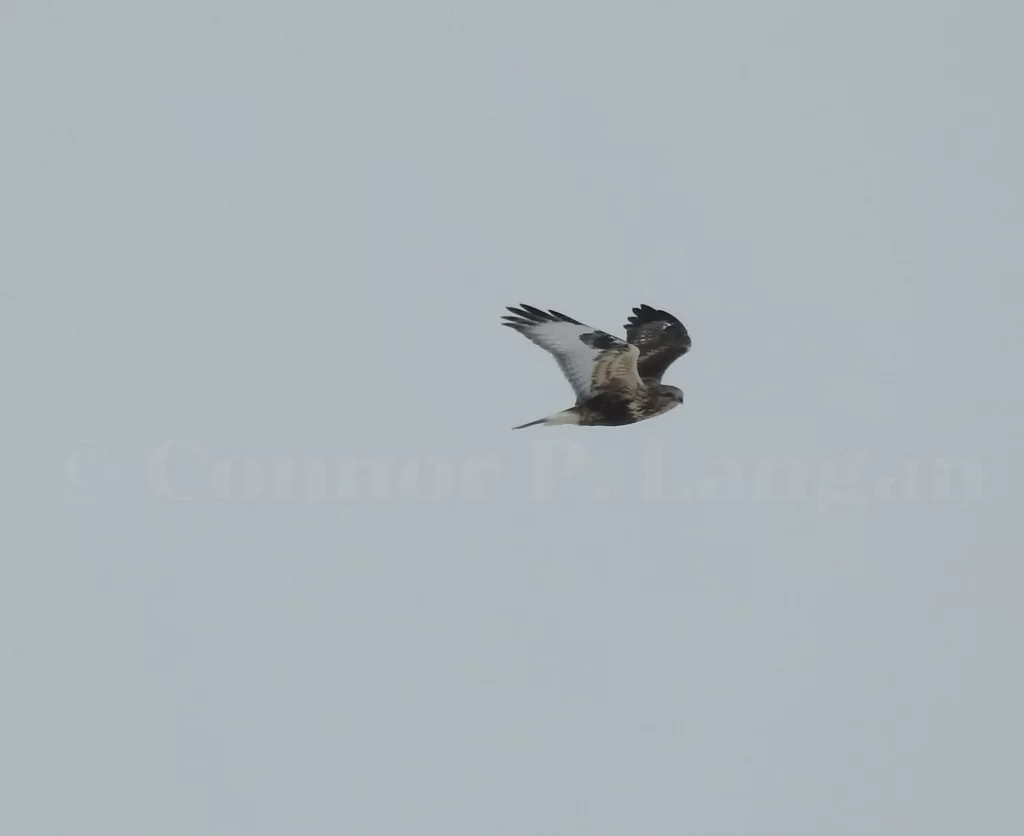
Rough-legged Hawks are medium-sized raptors that come in light, dark, and intermediate color morphs. They’ve got long, slender wings compared to other buteos, and you may spot them hovering in place.
Rough-legged Hawks breed in tundra and taiga forests in North America. During winter, they seek out open habitats that are similar to the ones in which they thrive during the summer. Therefore, look for them in agricultural fields, pastures, and grasslands in Michigan.
Numbers of Rough-legged Hawks peak in Michigan from mid-October through April. You may be able to locate birds that are perched in trees or utility poles, but the best opportunity for viewing one of these birds involves spotting flying birds.
Snow Bunting
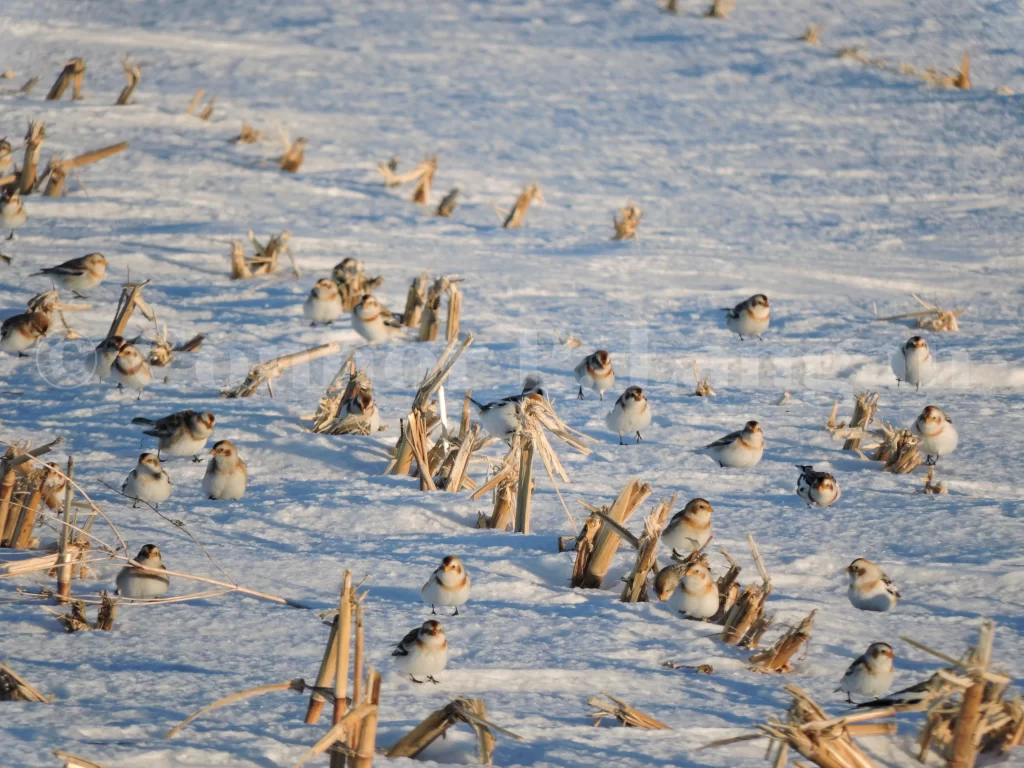
Snow Buntings are not as pure white during the winter as they are during the breeding season, as birds add more brown feathers to their plumage at this point in the year. Nevertheless, they are still plenty white with their unmarked undersides.
Snow Buntings associate in groups of other Snow Buntings that range in size from a handful of birds to several hundred. They are often found in mixed-species groups with Lapland Longspurs and Horned Larks, and they may forage on the sides of roads after a snowstorm much like these other birds do.
Snow Buntings begin to arrive in Michigan in good numbers by late October. They are one of the first songbirds to leave the state come spring, as most depart by early March. Birds then travel hundreds–if not thousands–of miles to their breeding grounds on the arctic tundra.
The best place to find these winter birds in Michigan would be in open areas that are reminiscent of their breeding habitat. Therefore, areas of short grass like pastures, agricultural fields, and beaches may host this species.
Snowy Owl
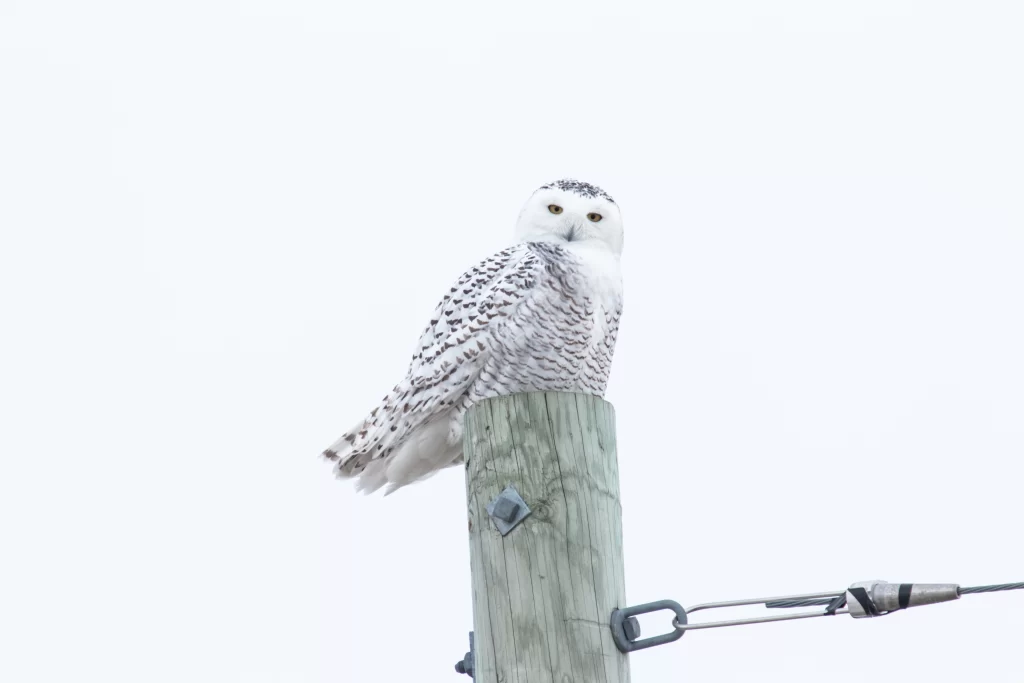
Snowy Owls are perhaps the most famous of the Michigan winter birds. Indeed, birders will travel considerable distances to spot one of these owls in Michigan. As it turns out, they are not too difficult to find, as nearly 12,000 eBird checklists have reported these birds.
Snowy Owls are an irruptive bird of prey, and their numbers in Michigan are contingent on prey populations north of the state. Winters in which many Snowy Owls are reported suggest that prey is scarce in Canada. This scarcity of prey causes these birds to invade states like Michigan as they search for food.
Snowy Owls may be found in a variety of open habitats within Michigan. Airports, beaches, and agricultural fields can all host these owls. Late November is typically when birds begin to trickle into Michigan. Most depart for their tundra breeding grounds by early March.

